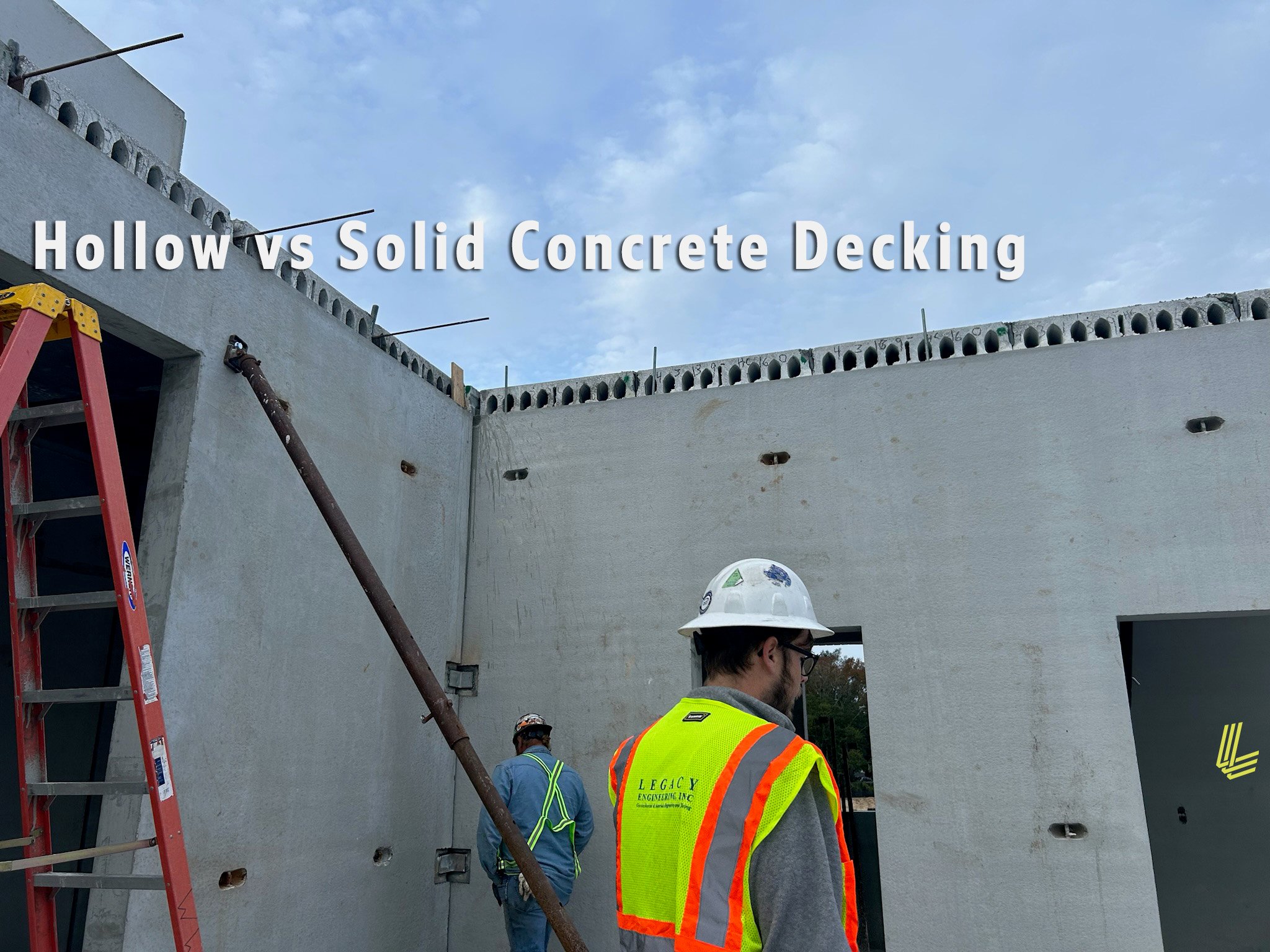Hollow vs. Solid Concrete Decking
December 29th, 2023 | 2 min. read

When beginning your next commercial project, it is pivotal to consider the type of decking that you are going to use and the characteristics of each. Decking is a term that has several different meanings in terms of construction but the main idea is the slab of concrete that is used when installing concrete slabs as the flooring. Concrete slabs are typically used in commercial buildings, parking garages, and bridges due to the significant amount of weight that the structure is intended to support.
.webp?width=417&height=313&name=IMG_0651%20(1).webp)
Legacy Engineering’s field technicians are qualified to perform various construction material tests including hollow core decking inspections. As shown, that is an example of a hollow core concrete slab in a local elementary school addition in Jacksonville, Florida. A hollow core is not a solid concrete slab because cylinder-sized holes are cut out throughout the whole slab which appears to be in the shape of a core.
Why choose hollow core decking?
Hollow and solid slabs are commonly used in construction but each has its own disadvantages as well as advantages. It is important to do thorough research and consider your project before making a decision on which to use.
Here are some reasons why one might choose hollow slabs over solid ones:
1. Lightweight Composition
Because cores are cut out of the slabs, the weight of the slabs are significantly less than if it was solid. Reduced weight makes transportation and installation much easier during construction.
2. Sustainable Material Use
Because of the hollow cores, less concrete is used. The less material used, the easier to transport and the less resources it takes to produce and transport the slab.
3. Saving Money
To tie the previously mentioned reasons, the lighter the material, the less money you will need to spend on actually purchasing it. Solid slabs are significantly higher in price because of the excess of materials used in production and transportation. Considering where to save money but still receive high quality results is an essential part of the construction process in order to maximize production and remain on budget.
4. Flexible Installation Methods for Utilities
The hollow cores create a channel for utilities to be installed. HVAC, plumbing, and electrical wiring now have several places to be installed and integrated within another. Hollow areas allow easier routing and additional space to be created. Solid cores lack the versatility and must be installed with exact precisions to allow enough space for said utilities.
.webp?width=406&height=539&name=IMG_0644-1%20(1).webp)
When considering the differences between solid and hollow core slabs, be mindful to note the purpose of your project. Specific requirements per project may include load-bearing considerations and local building codes. Be sure to consult the engineer assigned to your project about what option works best with your building.
If you are looking to schedule an inspection of the slab installed, please click here and email our scheduling team directly. Legacy offers high-quality material testing services and will ensure that your slabs are placed and installed correctly.
If you’d like to explore more of our material testing services, please click here and be redirected to our service page where you can find further information and multimedia.
Topics: